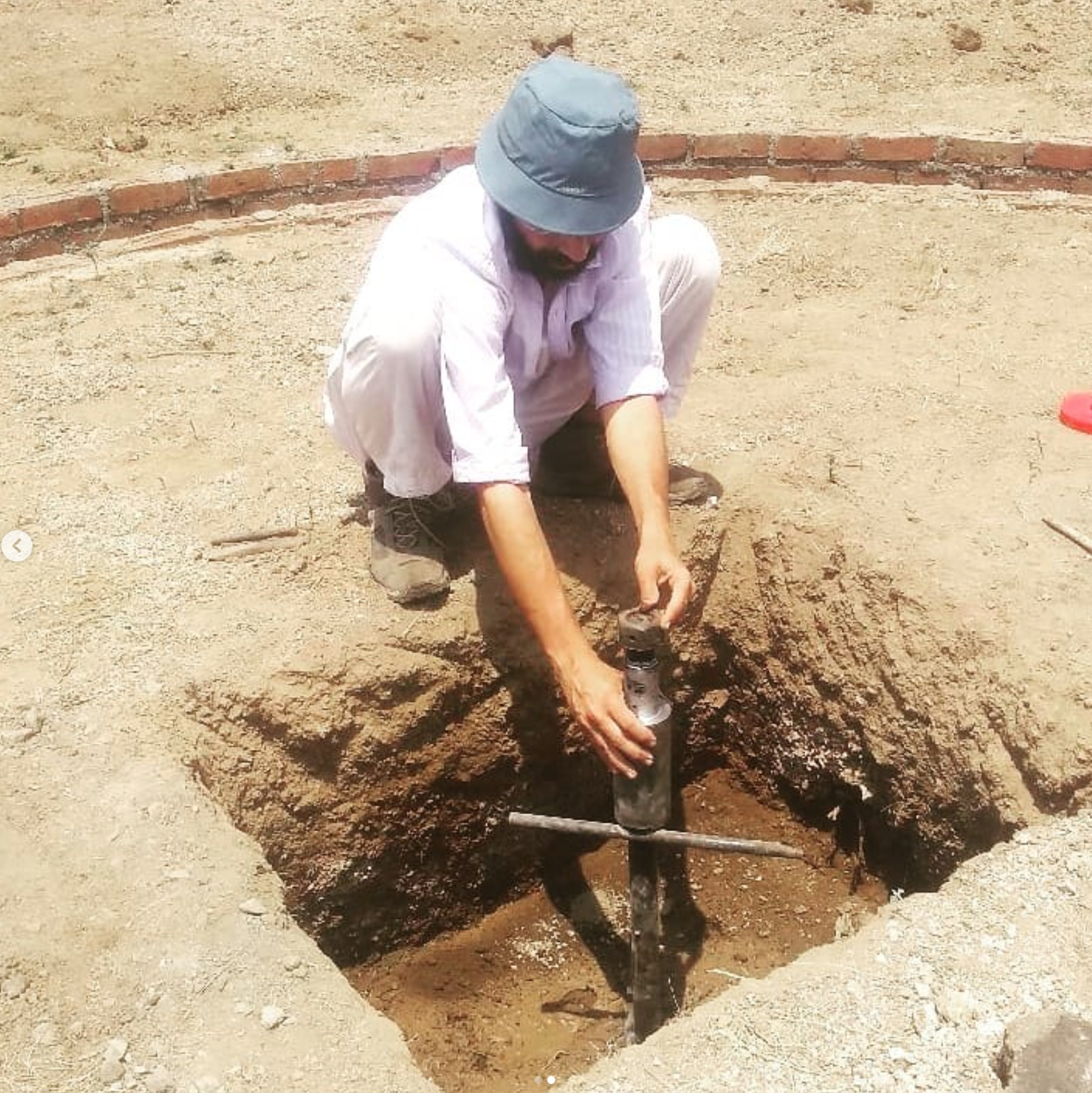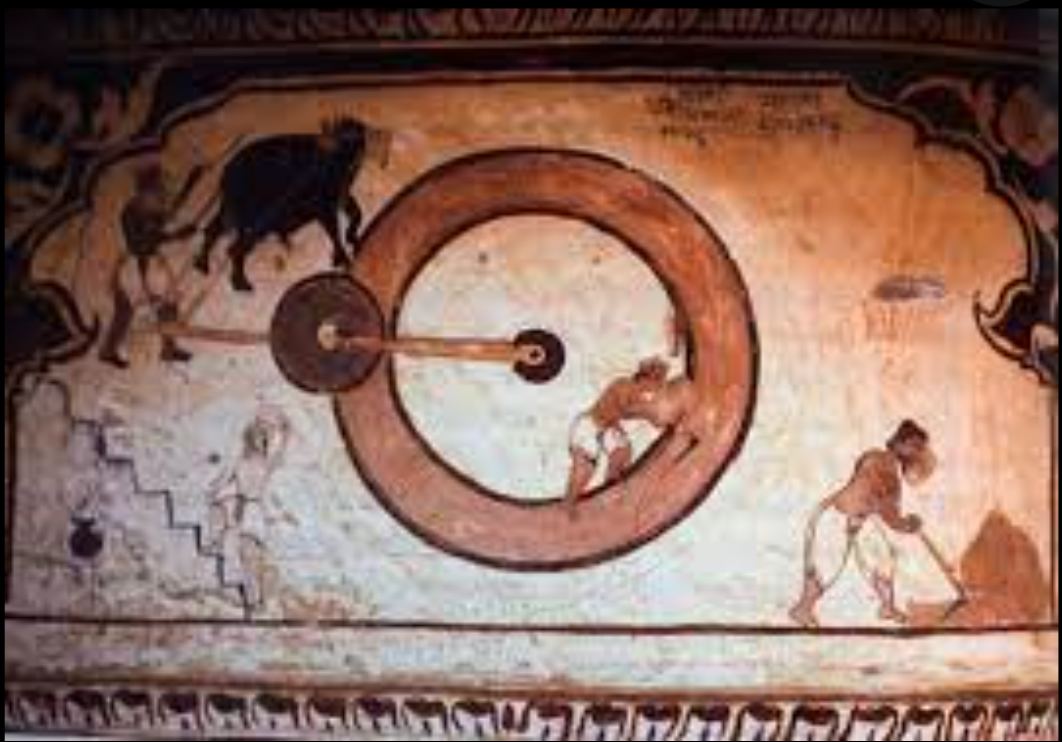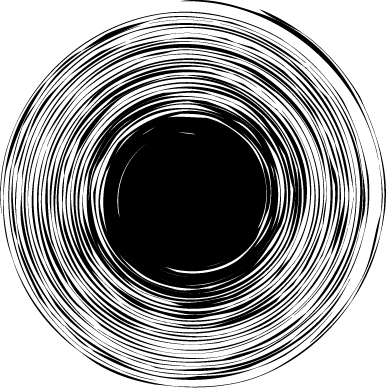We recently began an exploration into a traditional building material - Lime. These explorations seemed to grow bigger and bigger which led us to research The Lime Chakki and build one for ourselves. The Lime Chakki is one of the most efficient age-old methods of making lime mortar. The purpose of this technique is to blend different additives with lime in the presence of water and other organic ingredients to form a homogeneous mixture.
In our local area (Ahmadnagar, Maharashtra) this material and way of processing were extensively used to build homes, temples, footbridges, and palaces. With the ease of use of cement-concrete and RCC materials, traditional techniques of building with mud and lime are now remnants of architecture that use to be.
After inquiring about its mechanism locally, we decided to construct one for our future explorations with lime.



The inner circle of the chakki is about 8ft in diameter and the outside 10ft. A 170kg grinder stone moves in the circular path. The stone can be pulled by bullocks, a tractor or even motorised. In this case, for now, it is pulled by a tractor. To begin with, this chakki was constructed using burnt bricks and cement mortar. It was plastered using lime over the course of use. The centre holds a 3ft shaft of heavy metal that is fit with two ball bearings. The centre shaft is welded to a long pipe that runs through the stone wheel with two more ball bearings on either side of the stone. The four-ball bearings distribute the weight and ease the movement such that even a person with little force can move the bulky stone.
We receive our fat lime ( chunks of kiln burned limestone) from a distance of 70kms which is then slaked (hydrated) on site in metal drums. Once the lime cools, barnels of it are added to the chakki with sand, a few litres of sticky admixtures and water to make a mortar mix.
We receive our fat lime ( chunks of kiln burned limestone) from a distance of 70kms which is then slaked (hydrated) on site in metal drums. Once the lime cools, barnels of it are added to the chakki with sand, a few litres of sticky admixtures and water to make a mortar mix.
There used to be a time when every village had one huge chakki that any villager when constructing could use. When we asked around our village, only those above 65 years of age could recall the olden chakkis. As we went looking around we found some traces of these almost buried chakkis existing locally and around india.



Left: A historical pictorial representation of the lime chakki found in Dundlod (1888). The names of the masons are included (top right).
Center: A historical reference for the chakki being used. Source: Akbar- the Aesthete Painting illustrated in Akbarnama depicts the construction of a fort at Agra.
Right: A grinder stone was found at the village temple. It might look tiny in the photo but is actually a whole, homogenous basalt stone, about 3ft in diameter, and weighs about 200-250kgs. This once spun in the village chakki which now lays buried.
